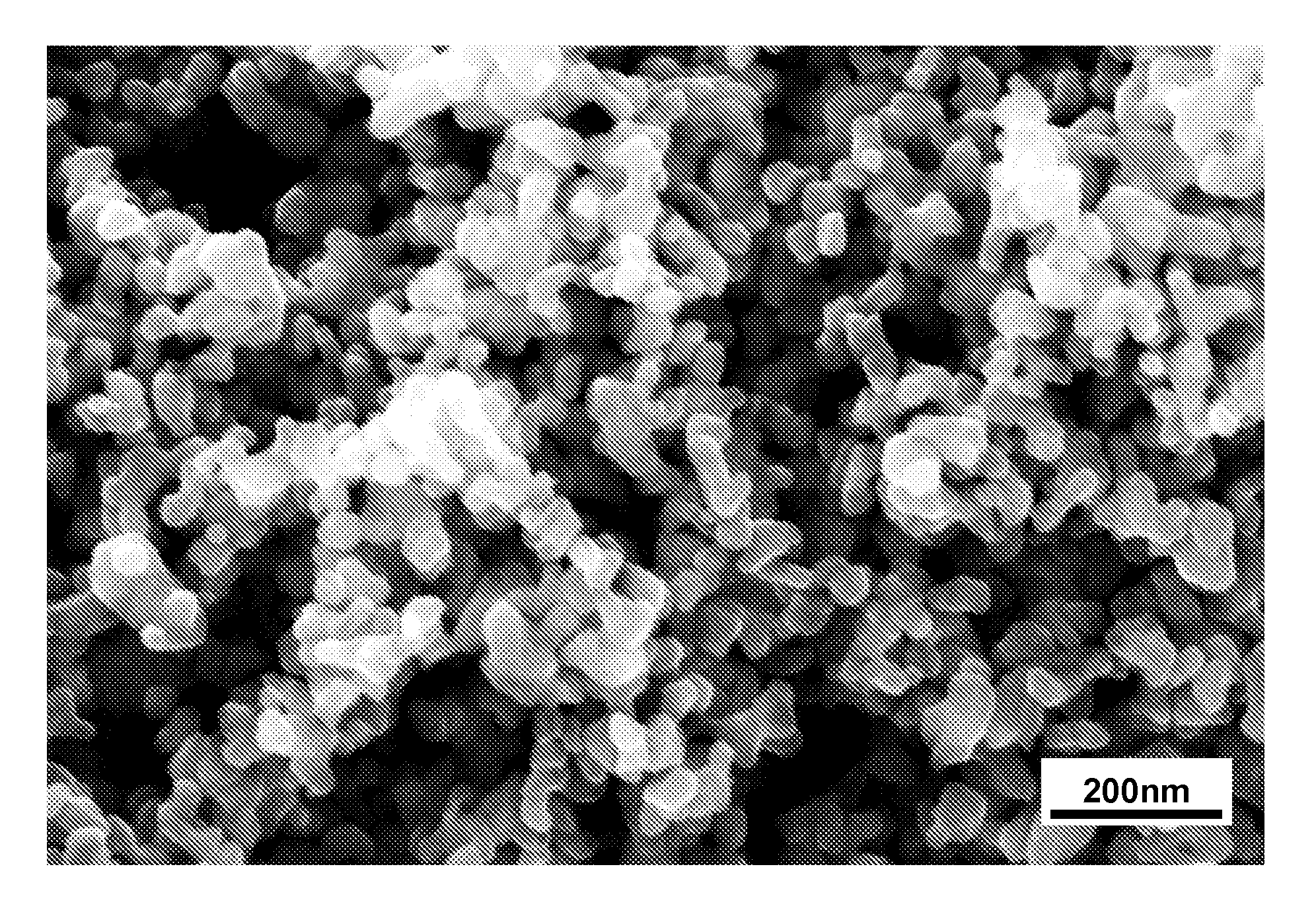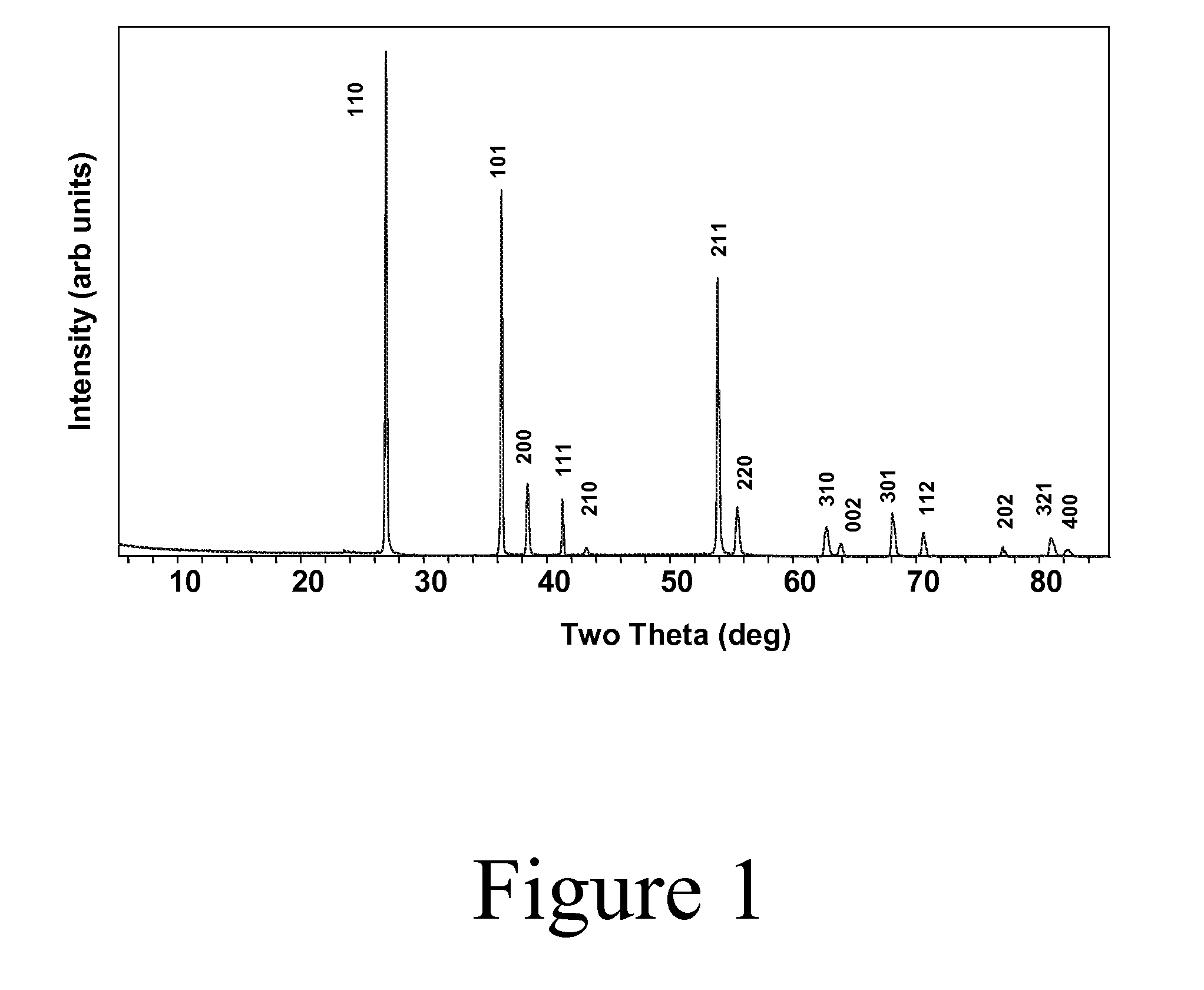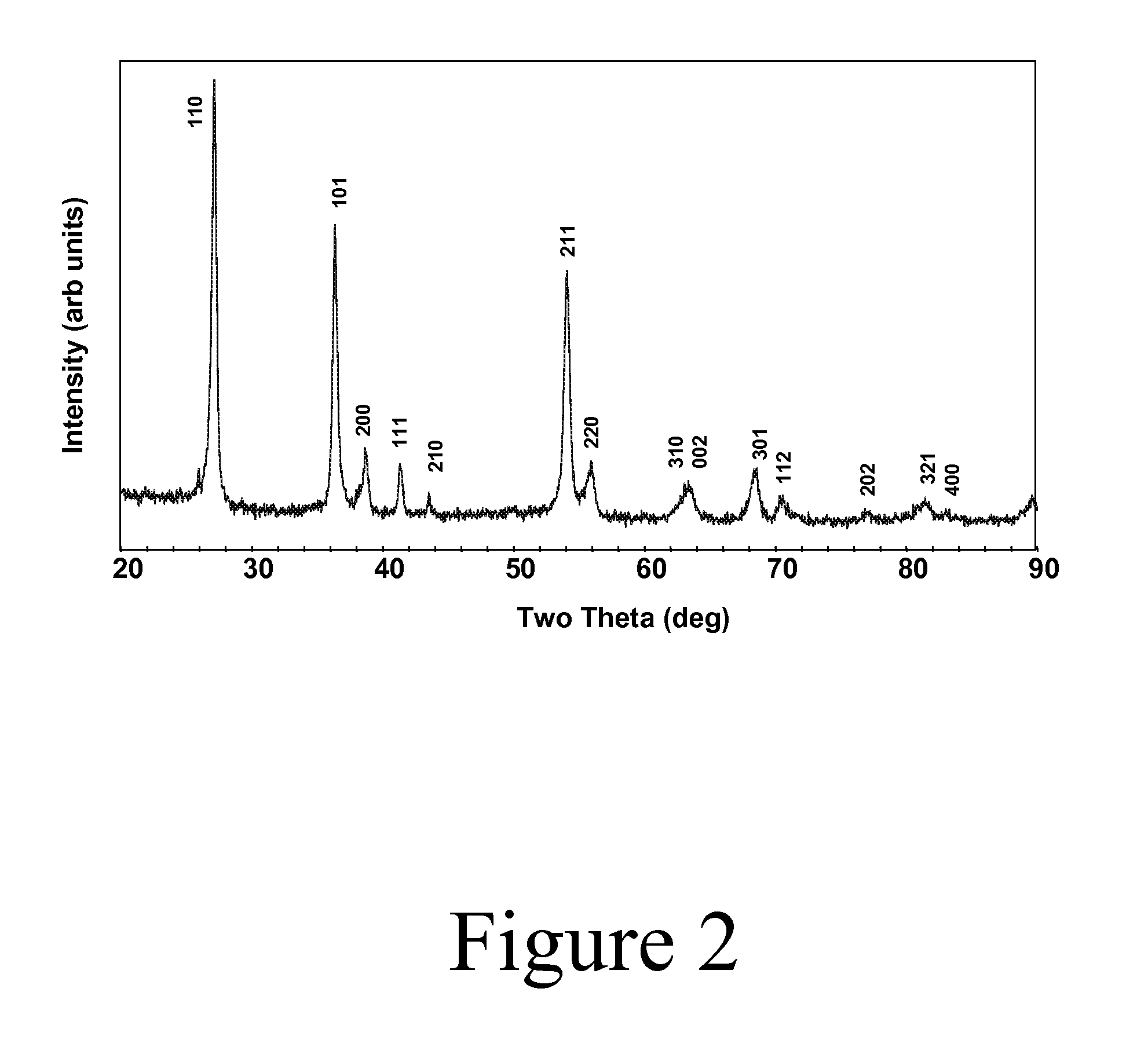Conducting Metal Oxide and Metal Nitride Nanoparticles
a technology of metal nitride and metal oxide, which is applied in the direction of oxide conductors, non-metal conductors, cell components, etc., can solve the problems of unable to achieve high-efficiency electricity generation from fuel and oxygen electrochemical reaction, limited efficiency, and the effect of most advanced materials only reaching 50% at bes
- Summary
- Abstract
- Description
- Claims
- Application Information
AI Technical Summary
Benefits of technology
Problems solved by technology
Method used
Image
Examples
example 1
Preparation and Characterization of Conducting Ti / W Oxides in Bulk and Nanoparticle Form
[0051]Synthesis: While a nearly single phase bulk powder of Ti1-xWxO2 has been prepared by hot pressing stoichiometric reactants under an argon atmosphere in a graphite furnace at 1400-1500° C., we have found a lower temperature method to be more convenient. Sealing the appropriate ratio of precursors in a silica tube is sufficient to fix the oxygen stoichiometry during a high-temperature synthesis: e.g., at 1100° C. with a halide transport agent such as chlorine: (1−x) TiO2+2x / 3 (0.5 W+WO3)→Ti1-xWxO2. Typically, 8-10 grams of product can be prepared in a 16 mm ID sealed silica tube (about 20 cm in length) containing only about 10 mg of hexachlorobenzene. The hexachlorobenzene decomposes at elevated temperatures to release chlorine, which is a suitable chemical transport agent under these conditions. The powder produced by this method is largely agglomerates of small single crystals with dimensio...
PUM
| Property | Measurement | Unit |
|---|---|---|
| length | aaaaa | aaaaa |
| length | aaaaa | aaaaa |
| length | aaaaa | aaaaa |
Abstract
Description
Claims
Application Information
 Login to View More
Login to View More - R&D
- Intellectual Property
- Life Sciences
- Materials
- Tech Scout
- Unparalleled Data Quality
- Higher Quality Content
- 60% Fewer Hallucinations
Browse by: Latest US Patents, China's latest patents, Technical Efficacy Thesaurus, Application Domain, Technology Topic, Popular Technical Reports.
© 2025 PatSnap. All rights reserved.Legal|Privacy policy|Modern Slavery Act Transparency Statement|Sitemap|About US| Contact US: help@patsnap.com



